Client Discovery Methods

Full-Access Members Only
Sorry, this lesson is only available to Server Academy Full-Access members. Become a Full-Access member now and get instant access to this and many more premium courses. Click the button below and get instant access now.
Instructions
Q&A (0)
Notes (0)
Resources (0)

Saving Progress...
Resources
There are no resources for this lesson.
Notes can be saved and accessed anywhere in the course. They also double as bookmarks so you can quickly review important lesson material.
In this lecture, we are going to set up our Configuration Manager discovery methods so SCCM will be able to locate our domains forest, groups, system, and users. This lecture will be completed from our SCCM server.
Once you are logged into your SCCM server, open the SCCM console and navigate to Administration > Hierarchy Configuration > Discovery Methods. Here we can see there are several discovery methods available:
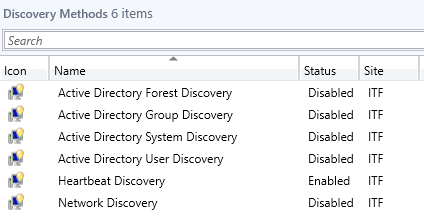
- Active Directory Forest Discovery
The forest discovery can discover sites and subnets within specified forests and create configuration manager boundaries for each.
- Active Directory Group Discovery
The group discovery will allow the configuration manager to find local, global, and universal security groups and their members. Distribution groups are not discovered as group resources.
- Active Directory System Discovery
This discovery method will discover computers from specified locations in Active Directory Domain Services.
- Active Directory User Discovery
This method discovers user accounts from the specified locations in Active Directory Domain Services.
- Heartbeat Discovery
This is used by active Configuration Manager clients to update their discovery records in the database. This can also force the discovery of a computer as a new resource record or it can repopulate the database record of a computer that was deleted from the database.
- Network Discovery
This discovery method searched your network infrastructure for network devices that have an IP address. It can discover devices that might not be found by other discovery methods including printers, routers, and bridges.
Right-click on Active Directory Forest Discovery and select Properties. First, you need to enable AD forest discovery. Next, we want to automatically create site IP subnet boundaries so check the other two checkboxes. You can specify the schedule, I am going to choose to run once every week:
Generally, this would depend on the size of your network, and you would want to choose a larger duration for larger networks.
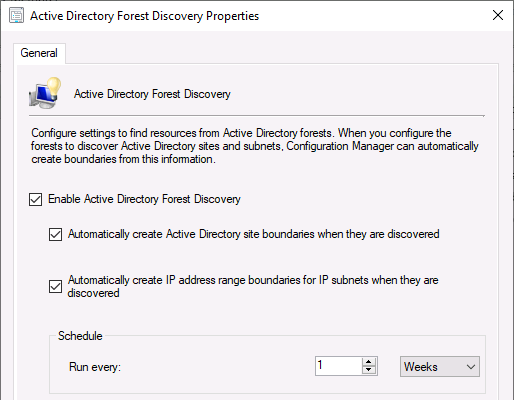
Click OK and right-click on Group Discovery and choose Properties. Enable the AD Group Discovery and click the Add button then select Locations:
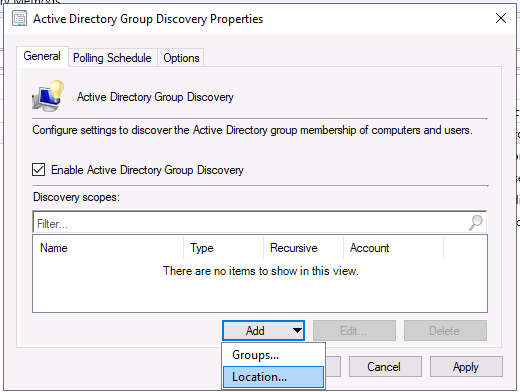
Type a name for the group. I am going to call it “Server Academy Security Groups”. Click the Browse button and select your domain.
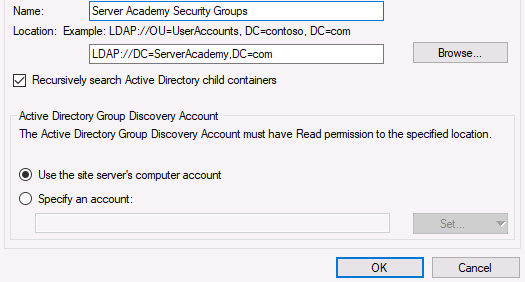
Click OK and say “Yes” when you are asked if you want to run a full discovery. Next, right-click on Active Directory System Discovery and select properties. Enable the AD System Discovery and click the add button.
Click the Browse button and select the root of your domain or the OU where your systems are located.
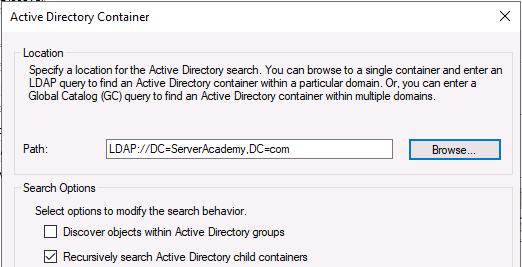
Click OK and close the window. Navigate to the Options tab. Select the Only discover computers that have logged on to a domain in a given period of time.

This prevents Configuration Manager from discovering old computers that are still in your domain. I am going to leave the default 90-day option selected and click OK. Again I will select Yes when it asked to run a full discovery.
Next, we need to open the properties of User Discovery and enable this method. And click the add button and select the root domain.
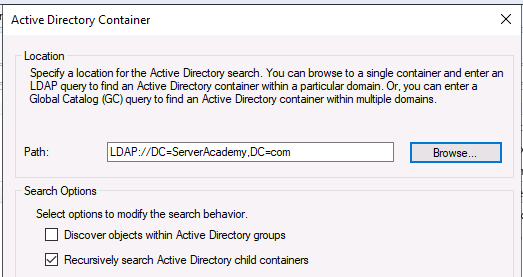
Click OK and select Yes at the prompt. Now switch over to the Assets and Compliance tab. Soon (usually within 15 minutes) you should start to see users and devices being discovered:
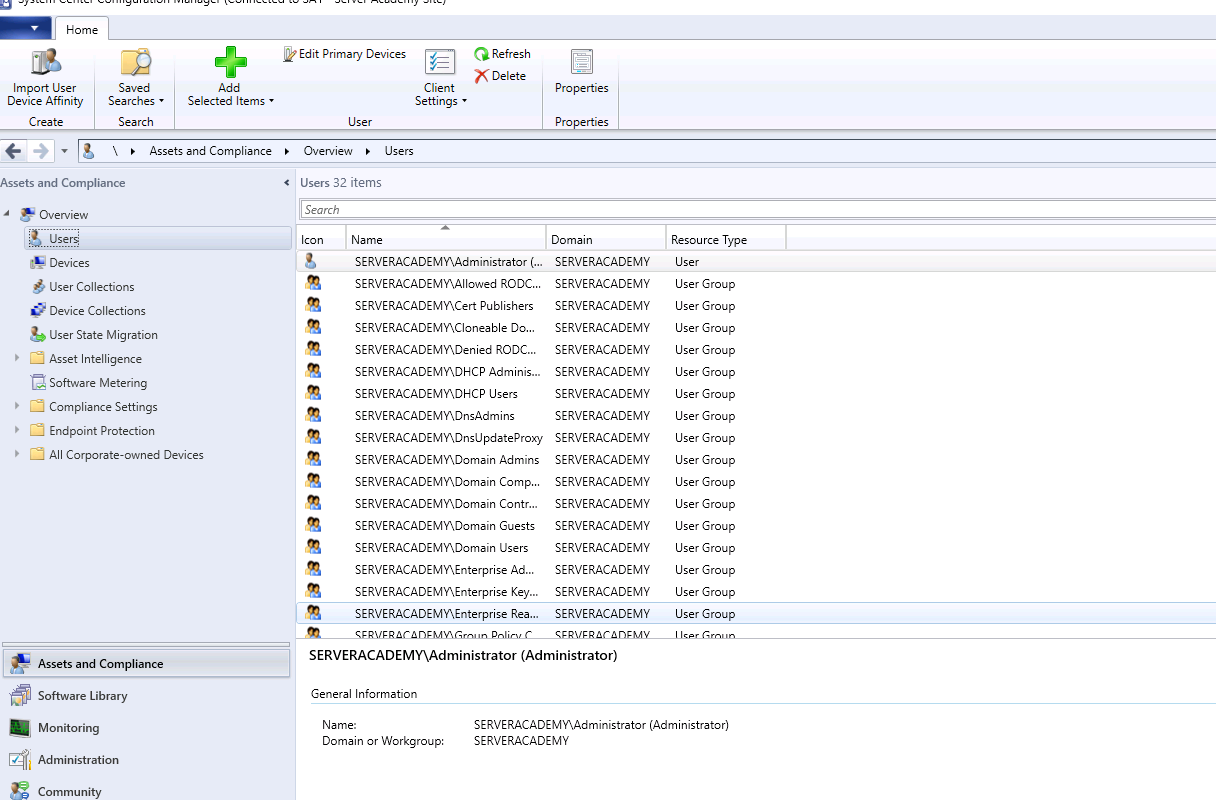
That is all we need to do in this lecture. Great job getting through this one and I look forward to seeing you at the next one!

Server Academy Members Only
Sorry, this lesson is only available to Server Academy Full Access members. Become a Full-Access Member now and you’ll get instant access to all of our courses.



Can you use SCCM to manage computers that are not in the domain?
Hi Matthew Stricker
Matthew Stricker
Yes, you can use SCCM to manage Non-Domain Joined Windows PCs.
Ricardo